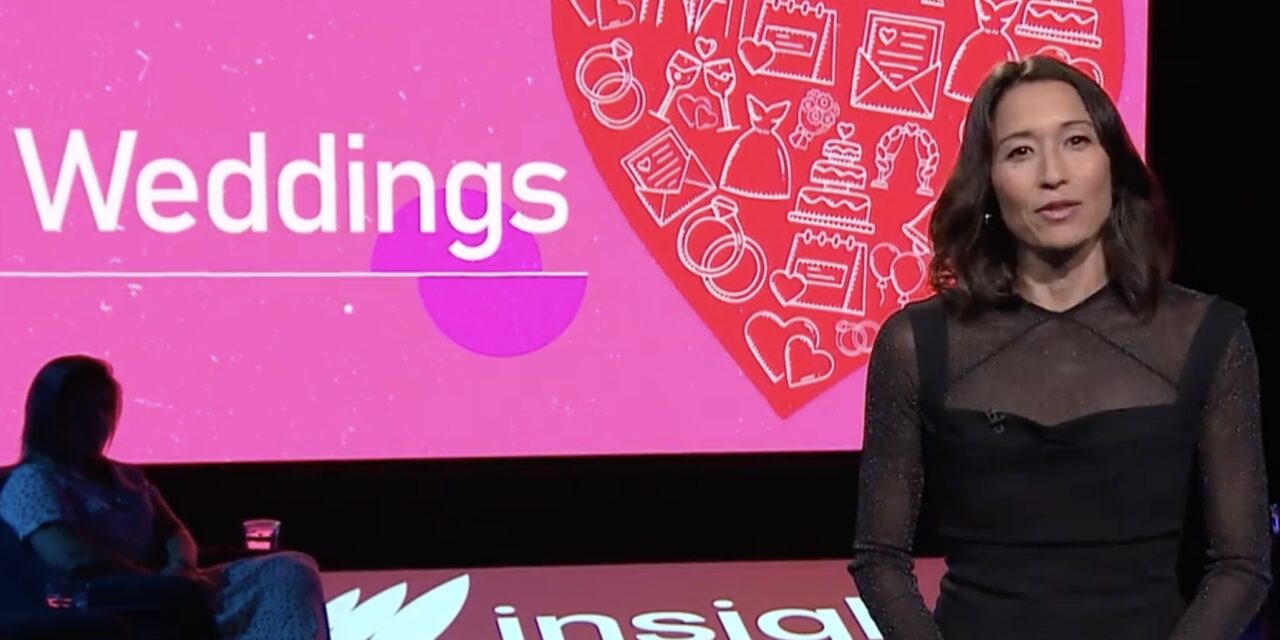The wedding industry in Australia is vibrant and evolving, despite the shifting societal views on marriage.
As a celebrant deeply embedded in this industry through both personal and industry-wide lenses, I’ve distilled some insights from recent discussions on SBS Insight [watch the episode + story on the couple who spent $200k + story on Phoebe almost calling off her wedding] to help you navigate and thrive in the 2024 wedding market.
The cohort of people getting married by a civil celebrant today is far more diverse than when I started as a celebrant back in Jesus’ day.
- Continued Popularity of Weddings: Despite reduced societal pressures to marry, the increasing cost of living, and modern views on marriage, weddings remain popular. Couples are spending more on their weddings, although they are inviting fewer guests compared to previous years.
- Diverse Wedding Preferences: From extravagant celebrations costing upwards of $200,000 to intimate micro weddings and DIY approaches, couples are choosing wedding styles that deeply reflect their personal beliefs and financial situations. This diversity requires celebrants to be adaptable and responsive to varying needs and expectations.
- Cultural and Personal Expressions: Weddings are increasingly seen as expressions of personal identity and cultural heritage. This is particularly evident in ceremonies like those of LGBTQ+ couples who celebrate their love while honouring their unique identities.

If you put food in the pantry by being a celebrant, that is to say that celebrant provides for your family, then you’ll be interested in what kinds of insights we can glean from these interviews with real people planning real weddings:
- Emphasise your personalisation skills: Market your services by highlighting your ability to tailor ceremonies to the unique stories and identities of couples. Showcase past weddings where you’ve embraced diverse cultural, personal, and thematic elements.
- Use Authentic Testimonials: Share stories and testimonials from past clients that reflect the depth and breadth of your offerings. Real stories resonate more deeply and can illustrate your versatility and sensitivity to clients’ needs.
- Engage Through Social Media: Utilise the social media platforms like Instagram, TikTok, Facebook and Pinterest where visual inspirations for weddings thrive. Regular posts featuring your weddings and how you served those clients can tap into the aspirations of potential clients.
- Diversify Offerings: Consider offering packages that cater to different types of weddings—from lavish affairs to simple elopements. This diversification can help stabilise income streams but also help potential couples find a package that suits their unique wedding plans.
- Invest in Professional Development: Keep abreast of trends, such as the growing preference for non-traditional venues and secular ceremonies. Training in cultural competencies and inclusive practices can also enhance your appeal. May we suggest a Celebrant Institute membership, and/or our professional development courses.
- Focus on Relationships: Building strong relationships with wedding venues and other wedding vendors (e.g., photographers, planners) can lead to referrals. Equally, maintaining good relationships with past clients can lead to word-of-mouth recommendations, crucial for sustainable business growth.
- Understand market segmentation: In this program there are a couple who spent one thousand dollars on their wedding, forty thousand, and two hundred thousand. Those three couples were looking for three very different celebrants and packages. Understand these market segments, what products you are putting forward, and how they would choose a celebrant.
The Australian wedding market, while diverse and evolving, presents significant opportunities for dedicated celebrants giving the market their all.
There always has been and always will be the greatest opportunities in one of three areas in any business market:
- First: You might not be the first celebrant, but you can be the first to offer something unique or a different type of service or ceremony.
- Cheapest: Cheapest isn’t about being the lowest dollar for a similar service, but it’s about creating efficiencies and systems so that you can offer a product at a cheap price point whilst still making a good profit. Think more Jetstar, less Bonza.
- Best: This is the empty end of the market. It’s hard work being the best, and not just being the best, but communicating it, marketing it, being there sustainably for a long time. But it’s the most rewarding and I encourage all of you to aim to be here.
I’d encourage all of you to watch the episode on SBS On-Demand but I’ll leave you with this moment of zen, where a celebrant for Samantha and John stands there for the first kiss.
How do all celebrants worldwide not know to move for the first kiss today?






